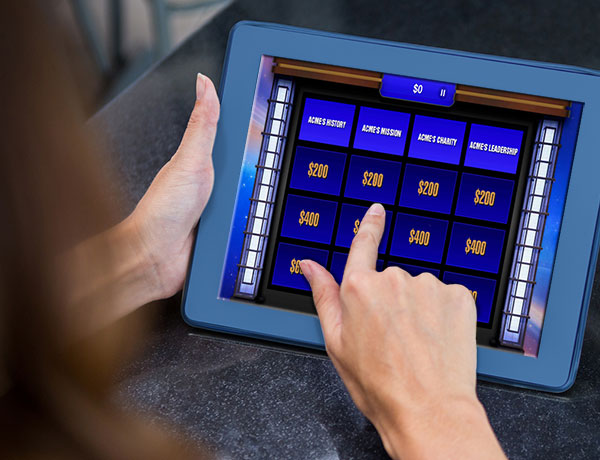By Yenny Suh, Senior Instructional Designer, The Game Agency
Are you struggling to nurture inclusion at your workplace? This topic is not the simplest to approach even if the desire to be more inclusive is there. A safe space is needed to teach and learn about exclusivity and one modality provides this safe space while also putting learners in the action, games.
Try out this game Unconscious Bias which aims to promote inclusion in the workplace. After you’ve played, I’ll walk you through how I created this game along with some tips and important design decisions.
1. Set a clear goal
What comes to your mind when you think of the word inclusion? There are a myriad of topics, issues, and challenges we can discuss—so much so that it’s impossible to cover every single one of them in a single training session. Believe me, no one can build an inclusive workplace with one training. That’s why you need to start with a clear goal. Think about one thing you want your learners to remember, apply, or demonstrate. Think about one single change you would like to see at your workplace. That should be your goal. The goal of the Unconscious Bias game is to help people acknowledge their unconscious biases. To achieve that goal, I wanted to give them an opportunity to reflect on their thoughts and decisions, which leads me to my next point.
2. Create a realistic, relatable scenario
Gamification is always the answer if you’re looking for fun, engaging training, but Scenarios takes it to the next level. As its name suggests, Scenarios is our branching path scenarios game, where learners are placed into lifelike situations. The more realistic and relatable your scenario is, the more immersive and interactive your game will be. Think about your learners, their work environment, typical days, and all that. Create a setting, characters, situations, and/or challenges that can feel real to your learners. In the Unconscious Bias game, learners are asked to choose a partner to work with for a new project. While they make choices that mirror the choices they may make in real life, they are encouraged to think about why they are making such choices, which may not always happen in real life.
3. Weave some moments of reflection into your game
Whatever your learning goal is, you ultimately want to create a more inclusive workplace for everyone. The game you create has to be a safe space for that learning. Meaning, you don’t want to evaluate anyone’s knowledge or skills around inclusion or be so quick to judge them based on their choices. A game on inclusion should first be about reflection, as opposed to making the “right” choices. Weave some moments of reflection into your game and let them do their magic. Give your learners opportunities to challenge their thoughts in a safe space where it’s okay to make mistakes and learn. Ask the right questions at the right time to guide their reflection. The Unconscious Bias game has several reflective moments, which ask why questions to learners. “Why did you make that choice? Why do you think that way?” By asking these questions, the game invites learners to look at their thoughts more deeply and better understand what’s behind their choices.
4. Use gamification components thoughtfully and wisely
Inclusion is a sensitive topic. If you’re going to use games in inclusion training, you may want to re-evaluate your gamification components and use them a little more thoughtfully. For example, you may not want your learners to feel too competitive about your game. Or you may not want your learners to see others’ learning experiences to keep the game a safe space for everyone. Review your goal and scenario and think about what gamification components you’d like to incorporate or remove to better serve your learners. One big decision I made while designing the Unconscious Bias game was to hide the leaderboard at the end of the game. Who got how many points is not important for this game. And it’s not the goal of this game to punish learners who make a seemingly less inclusive choice. If anything, I hope they will make choices based on their unconscious biases and get a chance to acknowledge and reflect on them.
5. Lead them to the path to success
What’s cool about Scenarios is that you can create different paths and have learners go through a unique journey based on their choices. The nature of the game allows you to offer tailored feedback and targeted intervention. But it’s your job to lead all of the learning journeys to the path to success. You’re not trying to punish learners who happen to choose less inclusive paths. You want all of them to learn and succeed. Through questions and reflections, make sure each and every path is oriented towards the same goal. Choices that each learner makes guide the learning journey in the Unconscious Bias game. Just because learners make a choice that seems less inclusive doesn’t mean they are off track. Every path is right on track, leading them to think and reflect.
Play the Unconscious Bias Scenarios game today and try creating a Scenarios game yourself. You’re one significant step closer to building a more inclusive workplace in a more inclusive way. Game on!
If you’d like to learn about how you can use The Training Arcade® to build your own Scenarios game, schedule a call here.



